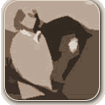Jennifer MacKenzie is an agricultural photo journalist with almost 30 year's experience. Operating from her base in Cumbria, Jennifer undertakes mainly industry-related freelance writing and photography.
Move to self sufficiency to avoid disease
A Northumberland family farming business is moving towards self sufficiency
in its sheep and beef enterprises to try to avoid price fluctuations in
breeding stock and importing disease.
Nilston Rigg Farms, at just under 1,000 acres, runs from 900ft above sea
level to 350ft on the banks of the River South Tyne near Haydon Bridge.
Northumberland type Blackface ewes are bred on the high ground at Nilston
Rigg, Langley, producing flock replacements and North of England Mules
which are crossed with the Suffolk and Texel to produce prime lamb - 1,800
finished lambs were sold last year.
And now replacements are being bred for the herd of 130 predominantly Limousin
cross suckler cows which are run across the ring-fenced acreage which has
gradually been taken back and farmed in-hand as tenants on smaller units
retired.
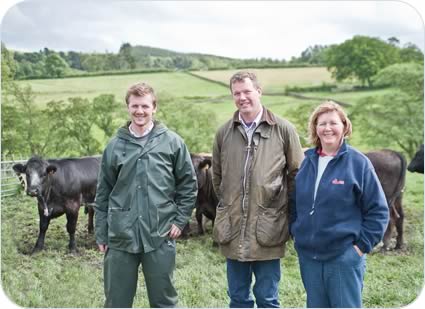 |
| Harry, Benedict and Annabelle with Limousin cross heifers |
The Nilston Rigg partnership involves Tommy Bates, whose land the farm
is on, his daughter Annabelle Morshead and son Benedict. Annabelle’s
son, Harry works on the farm, while eldest son Charlie helps part-time
while also running his own dance floor hire business. Benedict’s
son William is also planning to work at home.
Blackface sheep have been bred by the family for a number of decades and
while more recently home-bred sheep have been shown with great success,
both the sheep and beef enterprises are run very much with the commercial
market in mind.
Most of the 520 Blackface sheep are run on the higher ground at Nilston
Rigg with the best ewes bred pure and up to half the ewes being crossed
with the Bluefaced Leicester to produce gimmer lambs for the farm’s
700 Mule flock.
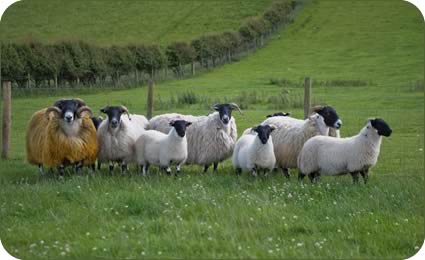 |
| Blackface ram, ewes and lambs |
Two years ago Annabelle paid £12,500 for a ram at Hexham Mart, the
type they had been looking for several years, with massive scope and size
and with many of the other preferred qualities of the breed.
“Because we want to produce finished lambs with a good carcase from
the Mules we wanted a ram with power and body. We can’t expect the
Suffolk or the Texel ram to do the whole thing,” said Annabelle. “ In
early December His wether lambs realized up to £92 a head and weighed
47kg, at Hexham.
“We’re aiming to produce a quality Blackface, mainly for our
own use, but we also sell Blackface tups at Hexham. I have always been
a believer in looking after the ewe flock and making sure they are good
quality and I always check when buying in a ram that he has good dam lines,“ she
added.
At this year’s Northumberland County Show a Nilston Rigg ewe won
the Blackface championship - the fourth time in a row at the event for
the family. They also fly the flag for the breed and their flock at other
local shows and testament to the quality of their breeding was that in
2009 four different ewe lambs each won their class at different shows.
Harry is following the family’s enthusiasm for the Blackface and
he is judging the breed classes at the Great Yorkshire Show this year.
Suffolk and Bluefaced Leicester rams are bought-in but Texel rams are bred
from the farm’s 40 pure Texel flock with some rams sold privately
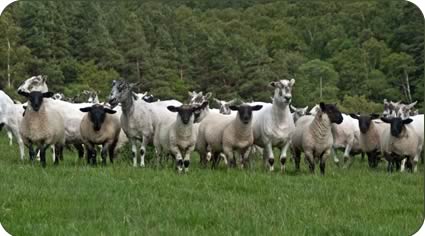 |
| Mule ewes with Suffolk cross lambs |
Lambing starts inside at the end of February-early March with some of the
early lambing Mules, the flock having scanned at 226%. These are followed
at the end of March-beginning of April by the later Mules and then the
Blackfaces outside which scanned at 183% from April 10.
Ewes carrying triplets and singles are lambed inside by Annabelle with
Harry taking charge of the outside lambing with the help of local farmer
Jimmy Story.
The Mule cross Suffolk lambs start selling at between eight and nine weeks
old. This year the first lambs were sold on May 17 and they were fetching £128
a head.
“We like the Suffolk tup because the lambs mature a bit earlier with
more weight. We sell every week which means we can ride the market,” said
Annabelle.
At two consecutive sales in mid-June 35 lambs sold to average over 200p
per kg with 38 making 206p the following week - some of these were triplets
which made £87 a head.
The aim is to sell the lambs finished with the majority away by November
when the grass quality declines.
Blackface wether lambs last year averaged £70 a head, with lambs
sold from the beginning of august. For the past three years they have won
the Hexham Christmas primestock show, with this years pen realizing 190p
per kilo .
While most of the Mule ewe lambs are retained as replacements, some are
sold through Hexham and at the first Mule gimmer lamb sale of the season
last year the farm’s lambs were first into the ring and averaged £100.
Blackface ewe lambs made £122 a head at the same sale.
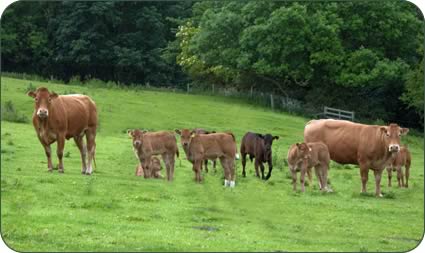 |
| Limousin cross cows and calves |
The farm’s herd of 130 suckler cows includes a handful of Belted
Galloways - a favourite of Tommy Bates.
In the last three years British Blue cross heifers have been bought in
with a view to crossing them with the Limousin bull, retaining only the
best as herd replacements. Now 80% of the herd is home-bred, to include
some pure Limousins.
The majority of the herd - 110 cows - calves in the spring with the remainder
in the autumn, producing calves which are sold as sucklers at seven to
10 months old making between £600 and £700 for an eight month
old calf.
With an eye on producing quality, pedigree Limousin bulls with a high beef
value are purchased at sales in Carlisle, paying up to 6,000gns.
“I like to have one bull that is a true terminal sire but I am also
looking for maternal traits such as easy calving and milk but we’re
not trying to compete with breeders aiming to produce show calves,” said
Benedict.
The calves are creep fed with a home mix in August and September with the
aim of selling them all by November to reduce feeding costs.
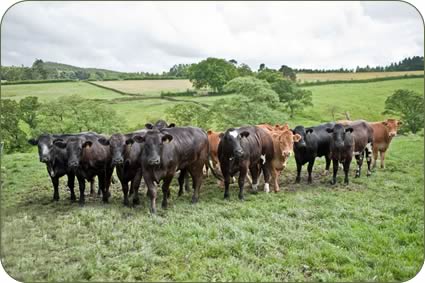 |
| Limousin cross heifers |
During winter housing the cows are fed clamp silage with autumn born calves
receiving creep feed and first calvers also receiving a home mix.
Up to 50 acres of winter or spring barley is grown for home consumption
as part of a five to 10 year rotation. Red clover rich leys have been sown
recently to improve the grassland, particularly for the finishing lambs.
The farm has been in ELS for five years and it is hoped that it can be
accepted for UELS now the five-year term has ended.
